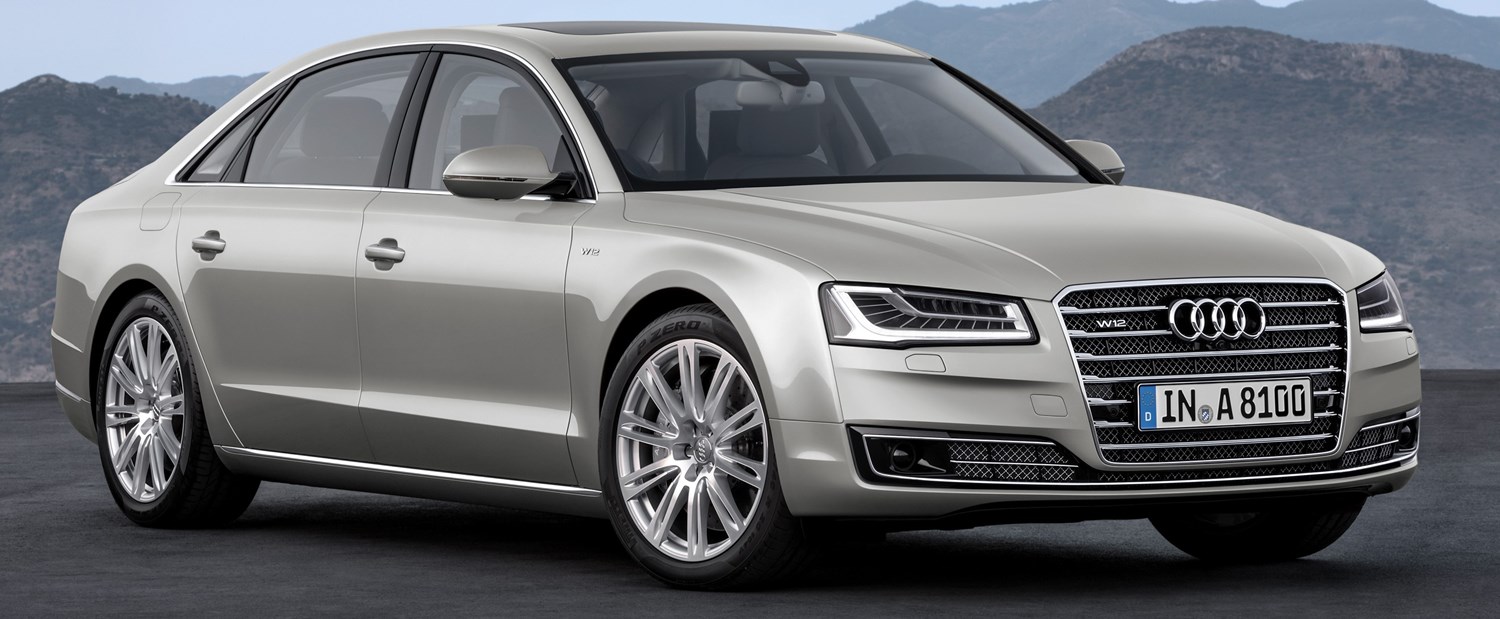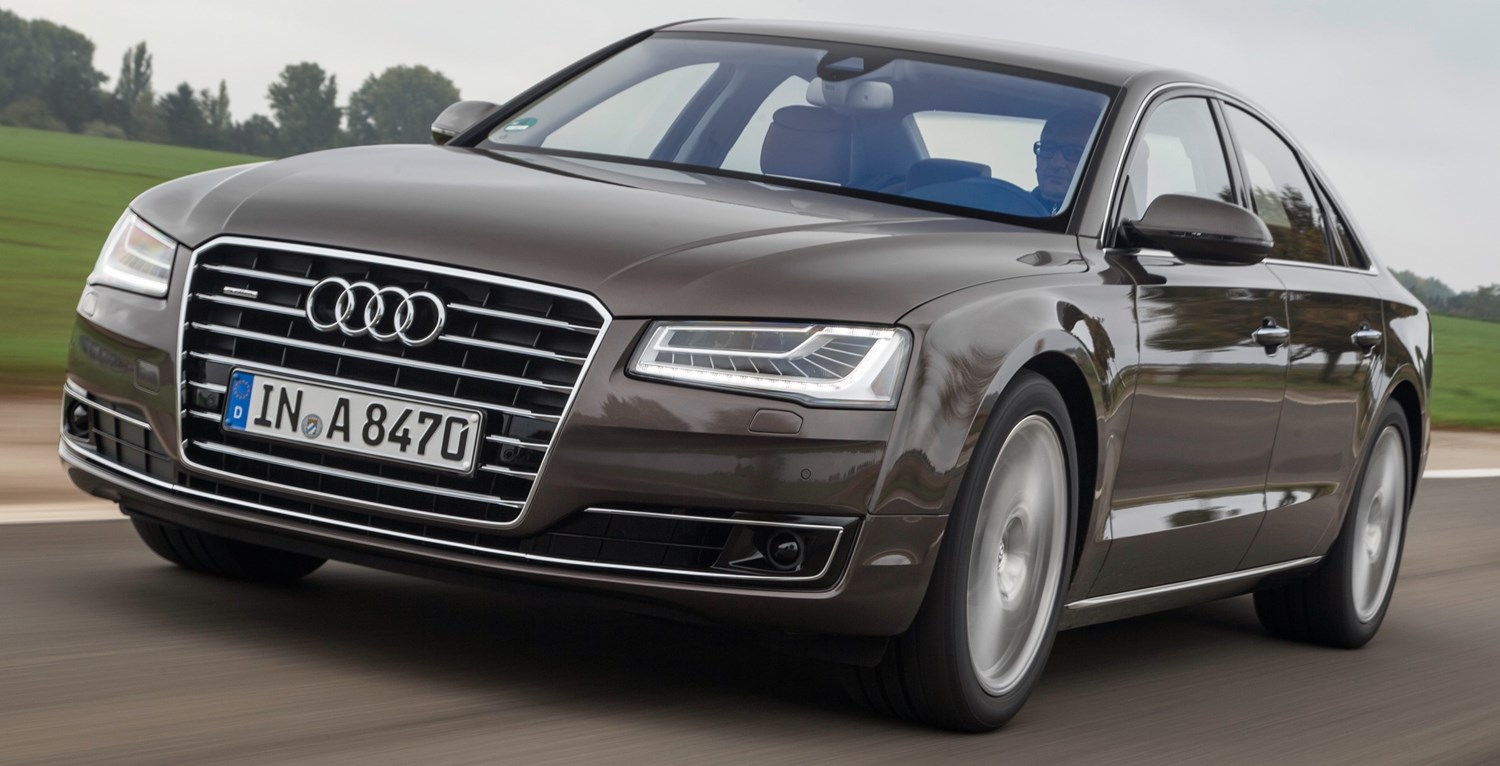Engines
Four engines are available with the Audi A8 – two for the regular vehicle, one only available in the A8L and one, in two states of tune, for the performance S8. In all cases the engines are paired to both an 8-speed automatic 'tiptronic' gearbox and 'quattro' four-wheel drive.
The entry level engine is a 3.0-litre, 6-cylinder turbodiesel, which produces 258hp. In the standard car, this will push the A8 to 60mph in 5.7s (0.2s slower for the A8L) and hit a combined fuel economy of 49.6mpg (48.7mpg in the A8L), while top speed is limited to 155mph. It has a CO2 rating of 149g/km, though the long-wheelbase A8L is 4g/km worse off and shunted into a higher tax band as a result.
A 4.2-litre, V8 turbodiesel is also available, with 380hp. With this engine, the differences between the standard car and A8L are far smaller – both will hit 60mph in 4.5s, with a top speed limited to 155mph, but the 1g/km difference in CO2 ratings (189g/km to 190g/km) means that both sit in the same tax bracket. Both cars rate at 47.1mpg combined.
Exclusive to the A8L is a W12 petrol engine. This 12-cylinder unit produces 493hp, but is only fractionally quicker than the V8, with 60mph coming up in 4.4s. Economy and emissions are significantly poorer, with 254g/km and just 25.7mpg combined.
The sporty S8 is equipped with a 4.0-litre V8 turbocharged petrol engine, getting 513hp in standard trim and 597hp in 'plus' specification. Both will hit 60mph in less than four seconds, with emissions at 216g/km and 231g/km respectively and 30.1mpg for the regular S8 compared to 28.2mpg for the plus model. Like all of its siblings, the S8 is limited to 155mph.
Running costs
The A8 is a big, heavy, executive car and you should expect the running costs to reflect that. In fairness, the diesel options are not tremendously expensive to run day-to-day – depending on specification, you could see nearly 50mpg.
Indeed the running costs as a whole are very much specification-dependant, with higher grade cars experiencing poorer fuel economy and emissions. You will need to choose carefully to avoid a high first-year tax rate as a result, with the six-cylinder diesel costing £200 or £500 for year one, the V8 diesel costing £800 or £1,200, and the S8 costing £1,200 or £1,700, depending on which specification you opt for.
The W12, rating at just 25.7mpg and a £1,700 first-year tax rate, is an extremely pricey car to run. The intricate and complex engine means that servicing costs are typically much closer to that of Audi's R8 supercar than to the rest of the A8 range, and second and third owners will need very deep pockets once the warranty has expired.
Generally, insurance costs for the A8 range are rather high too. Most are in the very highest insurance group, with only the 3.0-litre diesel models in groups 47 and 48.
Things to look out for
There are no major concerns with the A8 series, with the only recalls that affect the current car involving a handful of vehicles with a loose sunroof. Some older cars have seem a number of issues regarding airbag deployment, but again not on a significant number of cars. The aluminium construction also minimises the possibility of rust. Generally Audi's vehicles are well-made and the A8 isn't an exception to the rule.
They are rather complex vehicles – none more so than the W12 versions – so secondhand models will need to be checked to ensure that everything is as it ought to be with the automatic gearbox and four-wheel drive system. Long wheelbase cars are likely to have been used for chauffeur duties and seen a few hard miles and sportier versions may have been put through their paces.
Rivals
As with almost any Audi, there's rivals from elsewhere in the German triumvirate of premium car manufacturers, and BMW's 7 Series and the Mercedes-Benz S-Class are the alternatives here.
Looking beyond these obvious choices, a key rival would be the Jaguar XJ, while the Tesla Model S would also merit consideration. Those looking for a limousine might also consider the Range Rover, which is technically a different class of vehicle but no less well thought-of when it comes to the passenger experience.
Depreciation warning
While the Audi brand is pretty robust when it comes to secondhand values, executive cars are not and the A8's values plummet to around a third of the new price after three years. Again, this is a situation made better by choosing specification carefully, with the more frugal engines but higher trim levels performing better.
The one to avoid is the W12, which sees almost catastrophic depreciation, to the point it may be worth less than lower specification cars at three years, despite being at tens of thousands of pounds more expensive when new.


